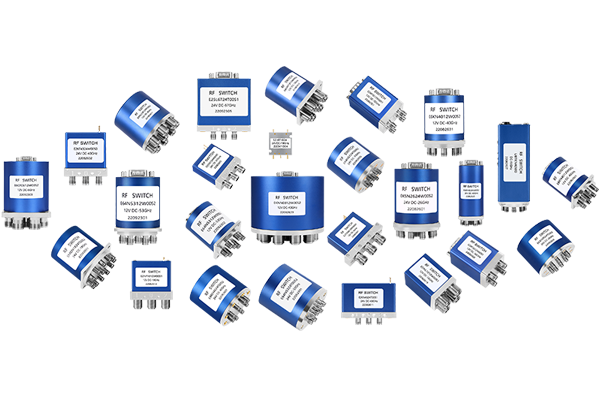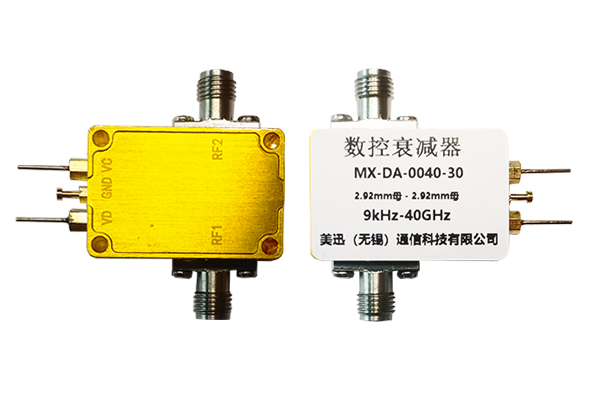
Pin diode technology has risen to prominence as an important building block in high-frequency designs thanks to its native electrical features Their prompt switching characteristics combined with low capacitance and small insertion loss enable efficient use in switching modulation and attenuation scenarios. The essential process enabling PIN diode switching is manipulating current through the diode using a biasing voltage. Biasing the diode adjusts the depletion region size in the p-n junction, changing its conductive state. Bias adjustment yields effective PIN diode switching suitable for high-frequency use with limited distortion
In designs requiring accurate timing control PIN diodes are integrated into refined circuit architectures They are effective in RF filter designs to allow selective passage or rejection of designated frequency ranges. Additionally their ability to handle elevated power levels makes them fit for amplifier power divider and generator circuits. Miniaturized high-efficiency PIN diodes now find more applications in wireless and radar technologies
Designing Coaxial Switches for Optimal Performance
Coaxial switch development is multifaceted and calls for precise management of several parameters Switch performance is contingent on the kind of switch operational frequency and its insertion loss attributes. Effective coaxial switch layouts strive to lower insertion loss and improve port-to-port isolation
To analyze performance one must evaluate metrics such as return loss insertion loss and isolation. Evaluation is achieved through simulation studies analytical models and hands on experiments. Accurate performance evaluation is key to ensuring coaxial switches operate dependably
- Analytical methods simulation packages and experimental testing are standard approaches to coaxial switch analysis
- Temperature fluctuations impedance mismatch and manufacturing inconsistencies can strongly alter switch performance
- Recent advances emerging trends and novel developments in coaxial switch design focus on improving metrics while reducing size and power use
LNA Design for Maximum Fidelity
Maximizing LNA performance efficiency and gain is necessary to secure exceptional signal quality in applications It necessitates thoughtful transistor selection bias configuration and circuit topology planning. Sound LNA architectures control noise contributions and support strong low-distortion amplification. Simulation and modeling techniques are essential for analyzing the noise consequences of design options. The objective is achieving a low Noise Figure which measures the amplifier’s ability to preserve signal strength while suppressing internal noise
- Device choice focusing on minimal intrinsic noise characteristics is paramount
- Adopting proper optimal biasing is essential to reduce noise creation in devices
- The chosen circuit topology plays a major role in determining noise behavior
Implementing matching networks noise reduction strategies and feedback control enhances LNA outcomes
RF Routing Strategies with PIN Diode Switches

Pin diode based switches enable adaptable and effective RF signal routing in various use cases These devices switch rapidly enabling active dynamic routing of RF paths. Low insertion loss combined with excellent isolation is a primary advantage that reduces signal degradation. Typical applications include antenna switching duplexing and RF phased arrays
A PIN diode switch’s operation depends on modulating its electrical resistance with a control voltage. The deactivated or off state forces a high resistance barrier that blocks RF signals. Introducing a positive control voltage reduces resistance and opens the RF path
- Moreover furthermore additionally PIN diode switches provide quick switching low energy use and small form factors
Multiple architectures designs and configurations of PIN diode switch networks can be constructed to deliver advanced routing functions. Through interconnection of switches one can construct dynamic matrices for adjustable signal path routing
Coaxial Microwave Switch Performance Evaluation

Comprehensive testing evaluation and assessment of coaxial microwave switches ensure optimal performance in systems. Many various diverse factors determine the switches’ performance including insertion reflection transmission loss isolation switching speed and bandwidth. An exhaustive evaluation procedure measures these parameters across varied operating environmental and test conditions
- Furthermore the testing should cover reliability robustness durability and resistance to harsh environmental influences
- Finally results from comprehensive testing offer crucial valuable essential data to inform selection design and optimization of switches for particular applications
Comprehensive Review on Reducing Noise in LNA Circuits
LNA circuits play a crucial role in wireless radio frequency and RF systems by boosting weak inputs and restraining internal noise. This review gives a broad examination analysis and overview of methods to lower noise in LNAs. We investigate explore and discuss chief noise sources including thermal shot and flicker noise. We examine noise matching feedback loop designs and bias optimization techniques for noise mitigation. The review underlines recent breakthroughs like innovative materials and circuit architectures that achieve lower noise figures. Through detailed coverage of noise reduction principles and techniques the article aids researchers and engineers in crafting high performance RF systems
Rapid Switching System Uses for PIN Diodes

They possess unique remarkable and exceptional qualities beneficial for high speed switching Minimal capacitance and low resistance support rapid switching speeds for applications needing accurate timing. Additionally their linear response to applied voltage aids in accurate amplitude modulation and switching behavior. This versatility flexibility and adaptability makes them suitable applicable and appropriate for a wide range of high speed applications Use cases cover optical communications microwave circuitry and signal processing devices and equipment
Integrated Circuit Coaxial Switch Circuit Switching Technology
Integrated circuit coaxial switch technology marks a significant advancement in signal routing processing and handling within electronic systems circuits and devices. These ICs control manage and direct coaxial signal flow providing high frequency capability with low latency propagation and insertion timing. The miniaturized nature of IC technology produces compact efficient reliable and robust designs suitable for dense interfacing integration and connectivity demands
- Through careful meticulous and rigorous implementation of these approaches engineers can achieve LNAs with exceptional noise performance supporting sensitive reliable systems By carefully meticulously and rigorously applying these approaches designers coaxial switch can realize LNAs with outstanding noise performance enabling sensitive reliable electronic systems With careful meticulous and rigorous execution of these strategies designers can obtain LNAs exhibiting excellent noise performance for sensitive reliable systems By carefully meticulously and rigorously applying these approaches designers can realize LNAs with outstanding noise performance enabling sensitive reliable electronic systems
- Applications cover telecommunications data networking and wireless communication systems
- Integration of coaxial switch ICs serves aerospace defense and industrial automation industries
- Consumer electronics audio video equipment and test and measurement systems also use IC coaxial switch technology
Considerations for LNA Design at Millimeter Wave Frequencies

At mmWave frequencies LNAs must contend with greater signal attenuation and intensified influence from noise sources. Parasitic elements such as capacitance and inductance dominate performance at mmWave so layout and component selection are critical. Controlling input match and achieving high power gain are critical essential and important requirements in mmWave LNA design. Choice of active devices such as HEMTs GaAs MESFETs or InP HBTs is crucial to reach low noise figures at mmWave. Additionally furthermore moreover careful design implementation and optimization of matching networks is vital for efficient power transfer and impedance matching. Package-level parasitics should be considered because they may impair LNA function at mmWave. Implementing low-loss transmission lines along with proper ground plane design is essential necessary and important for reducing reflection and ensuring bandwidth
Modeling Strategies for PIN Diode RF Switching
PIN diodes are vital components elements and parts used throughout numerous RF switching applications. Precise accurate and comprehensive characterization of these devices is essential to support design development and optimization of reliable high performance circuits. Included are analyses evaluations and examinations of electrical voltage and current characteristics such as resistance impedance and conductance. Additionally frequency response bandwidth tuning properties and switching speed latency or response time are assessed
Furthermore moreover additionally accurate model and simulation development for PIN diodes is vital essential and crucial for behavior prediction in RF systems. Various modeling approaches such as lumped element distributed element and SPICE models are used. The selection of an apt model simulation or representation relies on particular application requirements and the expected required desired accuracy
Cutting Edge Methods for Low Noise Amplifier Design
Designing LNAs is a crucial task requiring careful attention to circuit topology and component selection to reach optimal noise performance. Recent semiconductor breakthroughs and emerging technologies enable innovative groundbreaking sophisticated noise reduction design techniques.
Some of the techniques include using implementing and employing wideband matching networks selecting low noise transistors with high intrinsic gain and optimizing biasing schemes strategies or approaches. Furthermore advanced packaging and thermal control strategies play an essential role in lowering external noise contributions. By rigorously meticulously and carefully implementing these techniques practitioners can achieve LNAs with remarkable noise performance for sensitive reliable electronics
